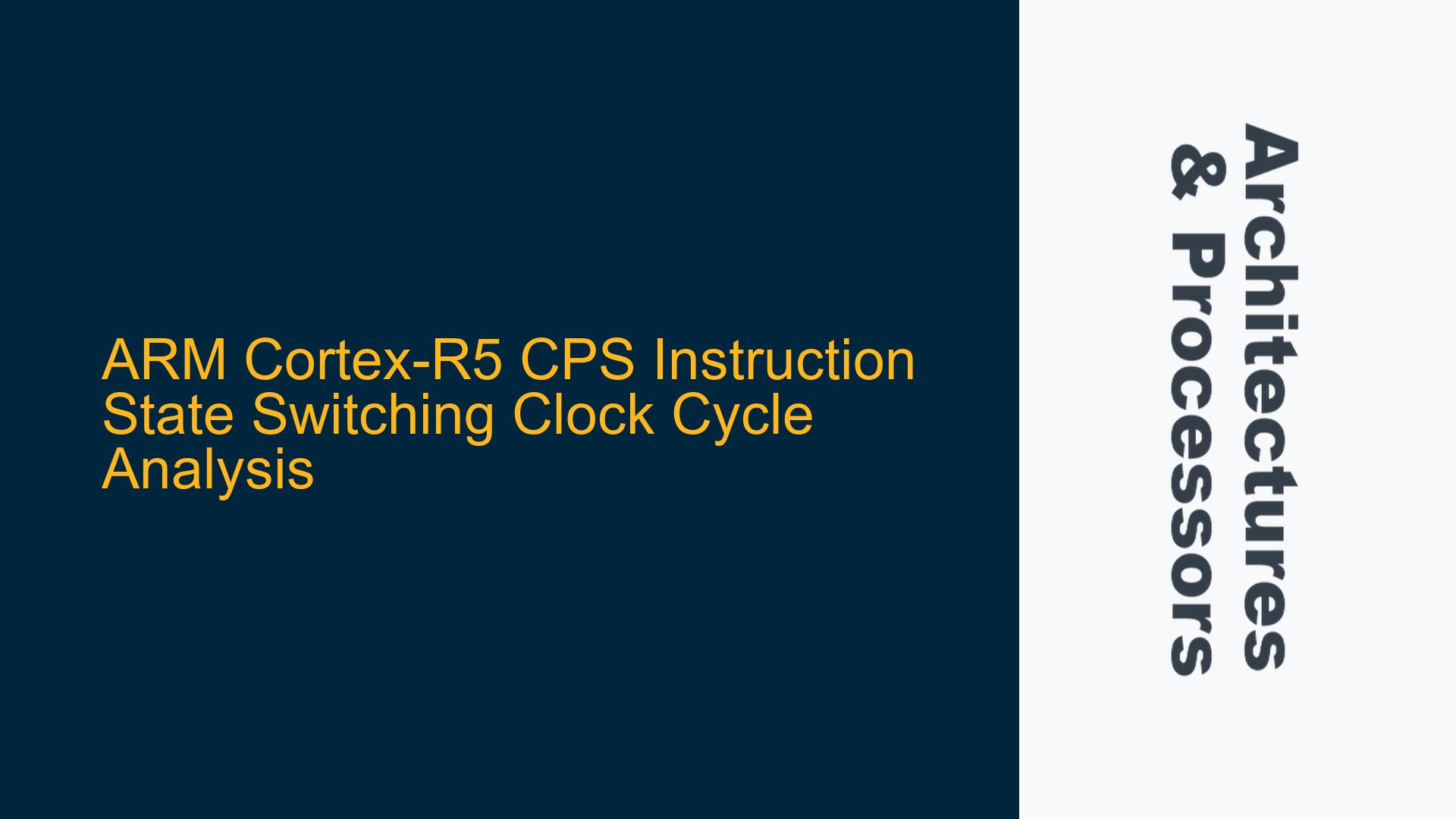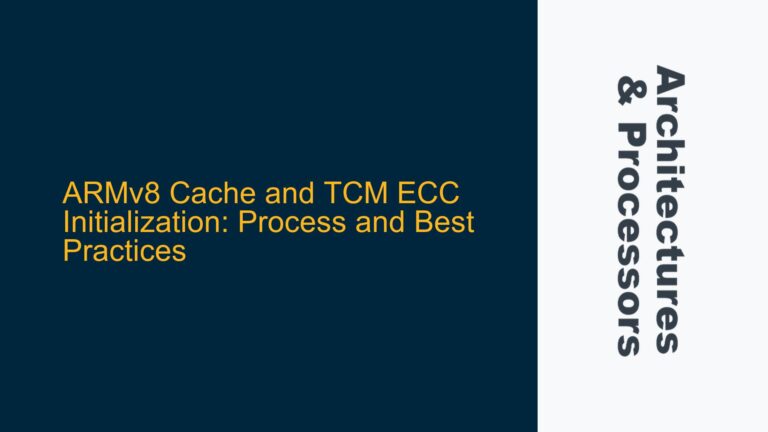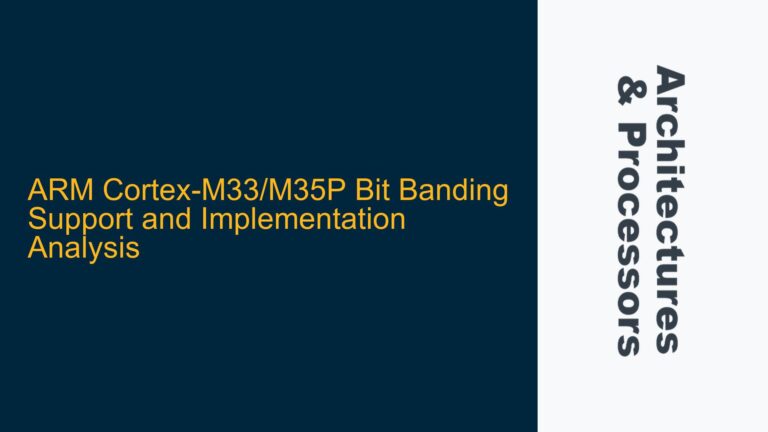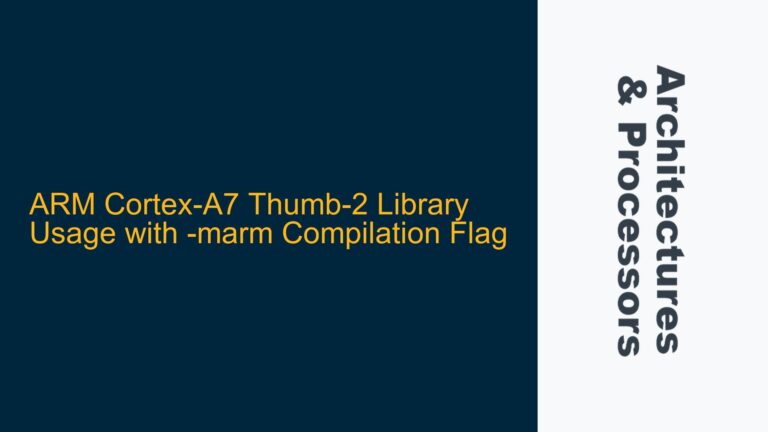ARM Cortex-R5 CPS Instruction State Switching Clock Cycle Analysis
The ARM Cortex-R5 processor is a high-performance, real-time capable processor designed for applications requiring deterministic behavior and low-latency responses. One of the critical operations in such systems is the switching of processor states, particularly when transitioning between different privilege levels (PL1 to PL0) or between different PL1 states. The CPS (Change Processor State) instruction is commonly used for this purpose. However, understanding the exact clock cycle cost of such state transitions is crucial for real-time system design, where timing predictability is paramount.
The clock cycle count for the CPS instruction is not a fixed value and depends on several factors, including the specific implementation of the Cortex-R5 core, the state being transitioned to, and external conditions such as cache behavior and dual-issue rules. This analysis delves into the intricacies of the CPS instruction’s timing, exploring the underlying architectural details, potential bottlenecks, and optimization strategies to ensure predictable and efficient state switching.
Cortex-R5 Dual-Issue Rules and Cache Behavior Impact on CPS Timing
The Cortex-R5 processor features a dual-issue pipeline, which allows it to execute two instructions simultaneously under certain conditions. This capability can significantly impact the timing of the CPS instruction, as its execution may be interleaved with other instructions or delayed due to pipeline dependencies. Additionally, the state of the instruction and data caches plays a critical role in determining the overall cycle count. A cache miss during the execution of the CPS instruction or surrounding instructions can introduce additional latency, making the timing less predictable.
The Cortex-R5 Technical Reference Manual (TRM) provides detailed cycle timing information for the CPS instruction, but it is essential to consider the broader context of the processor’s pipeline and memory subsystem. For instance, if the CPS instruction is followed by a memory access instruction that results in a cache miss, the effective cycle count for the state switch will be higher than the nominal value specified in the TRM. Similarly, if the CPS instruction is dual-issued with another instruction, the timing may vary depending on the nature of the paired instruction.
To accurately predict the cycle count for the CPS instruction, developers must account for these factors and analyze the specific code sequence in which the instruction is used. This requires a deep understanding of the Cortex-R5 pipeline architecture, cache behavior, and dual-issue rules, as well as careful profiling and benchmarking of the target application.
Optimizing CPS Instruction Timing Through Pipeline and Cache Management
Given the variability in the cycle count for the CPS instruction, optimizing its timing requires a combination of pipeline management and cache control techniques. One approach is to ensure that the CPS instruction is not immediately followed by instructions that are likely to cause cache misses or pipeline stalls. This can be achieved by inserting NOP (No Operation) instructions or other low-latency operations after the CPS instruction to allow the pipeline to stabilize.
Another optimization strategy involves preloading the instruction and data caches to minimize the likelihood of cache misses during the state transition. This can be particularly effective in real-time systems where the timing of state switches is critical. By ensuring that the relevant code and data are already in the cache, developers can reduce the variability in the cycle count and achieve more predictable performance.
Additionally, developers can leverage the Cortex-R5’s dual-issue capabilities to overlap the execution of the CPS instruction with other non-dependent instructions. This requires careful instruction scheduling and profiling to identify opportunities for parallel execution without introducing pipeline hazards or resource conflicts.
Finally, it is essential to validate the timing of the CPS instruction in the context of the specific application and hardware platform. This can be done using cycle-accurate simulation tools or hardware performance counters to measure the actual cycle count and identify any discrepancies with the expected values. By combining these techniques, developers can optimize the timing of the CPS instruction and ensure that it meets the real-time requirements of their application.
In conclusion, the clock cycle count for the CPS instruction in the ARM Cortex-R5 processor is influenced by a variety of factors, including dual-issue rules, cache behavior, and pipeline dependencies. Understanding these factors and implementing appropriate optimization strategies is crucial for achieving predictable and efficient state switching in real-time systems. By carefully managing the pipeline and cache, and validating the timing through profiling and benchmarking, developers can ensure that their applications meet the stringent timing requirements of embedded and real-time systems.






